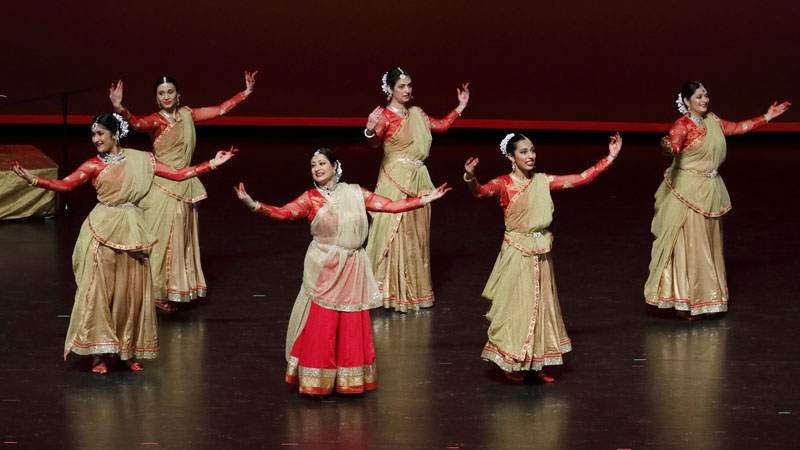The Nrityangan Kathak Dance Academy, located in , Indiana, teaches the North Indian classical dance form of Kathak. It was founded in 2004 by Dr. Anindita Sen.

Sen spent 15 years studying the Lucknow style of Kathak dance in Kolkata, India. She then traveled throughout the United Kingdom and the United States lecturing and demonstrating the dance tradition she offers to students at her academy. Her students have performed at numerous events such as the India Day celebration at , the , the , and events.
The Kathak form of dance reflects a North Indian classical dance tradition nurtured in holy temples and patronized in the courts of 16th-century Mughal emperors. While it is one of the eight forms of classical Indian dance, it is distinguished from all other forms through its fusion of Hindu spiritualism and Persian dance. It features fast footwork and intricate and graceful hand movements with repetitive pirouettes most comparable to Flamenco-style dancing.

At its core, Kathak dance is a form of storytelling; its name comes from the Vedic Sanskrit word “katha,” which means stories. Wandering Kathakars, or storytellers, traveled to different parts of India telling and enacting mythological Indian tales through mime, hand gestures, and facial expressions. Generational transfer of Kathak skills, techniques, and knowledge resulted in a refinement of this dance tradition.
The refinement of the Kathak dance tradition distilled three main schools, or ghanaras, which take their name from the city where the dance evolved. Historically the Jaipur ghanara focuses more on foot movements, and the Banaras and Lucknow ghanaras more on facial expressions and graceful hand movements. Although Kathak is an Indian/Persian interpretive tradition, it shares similarities with all other forms of Indian classical dance. They share an expressional component referred to as Nritya which emphasizes the graceful execution of words, musical notes, and gestures to articulate a message.

Help improve this entry
Contribute information, offer corrections, suggest images.
You can also recommend new entries related to this topic.

